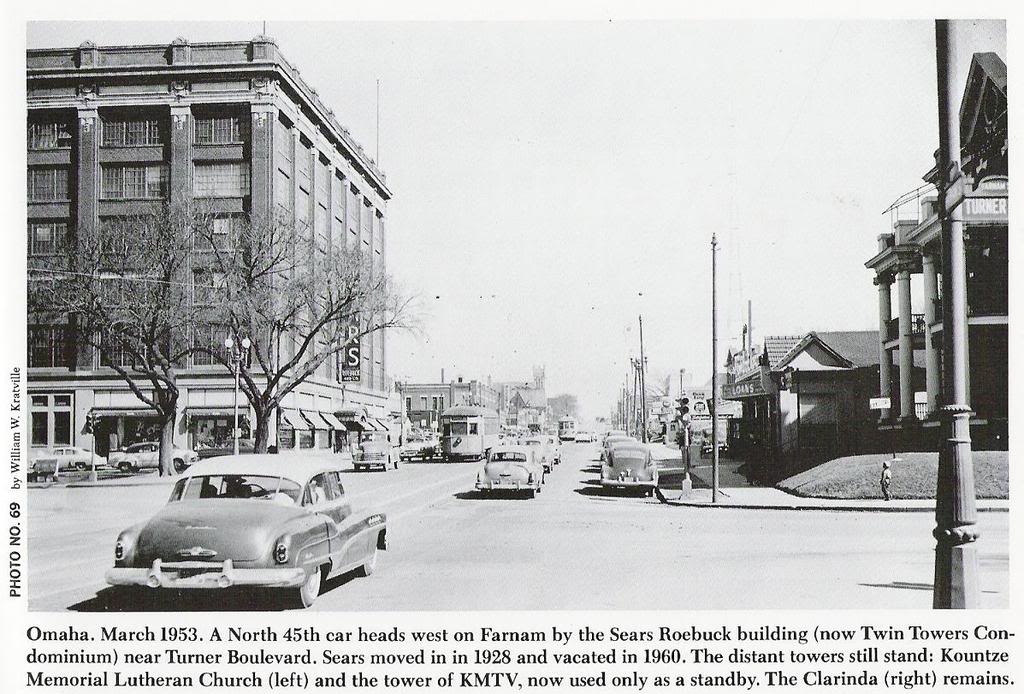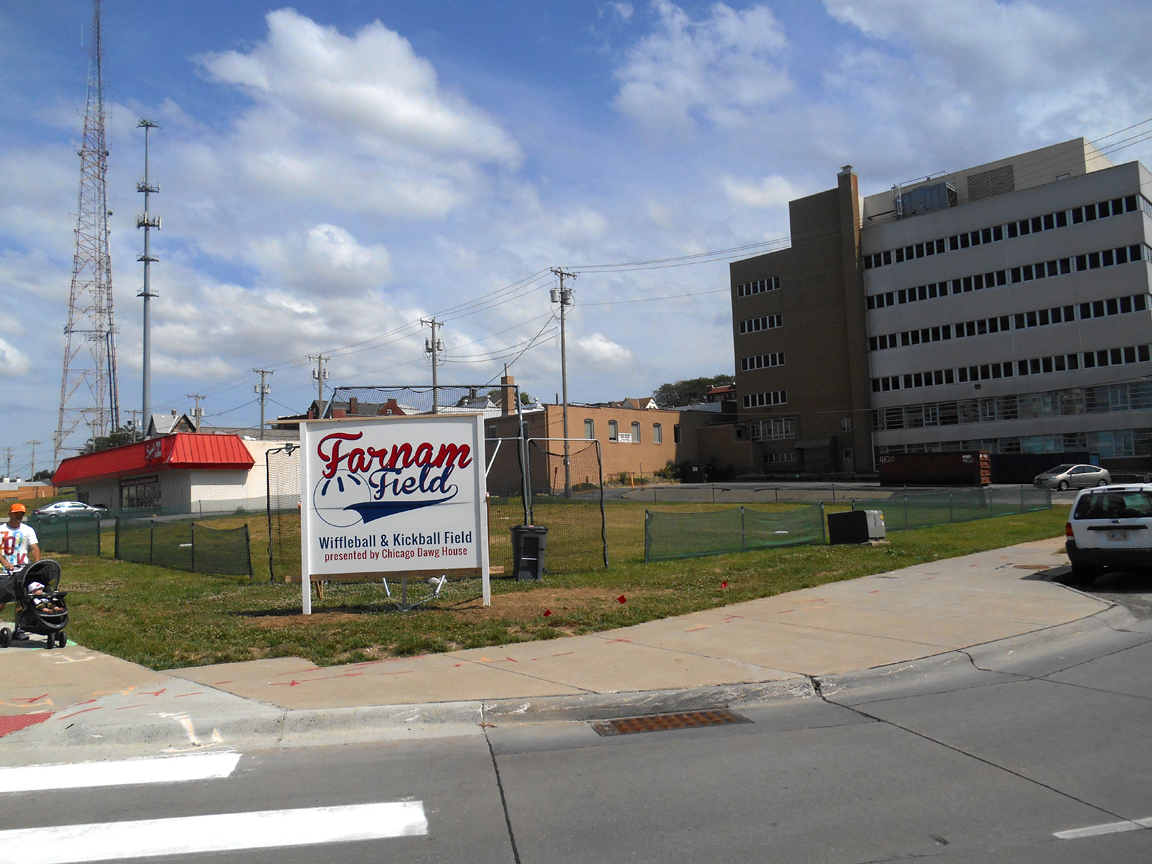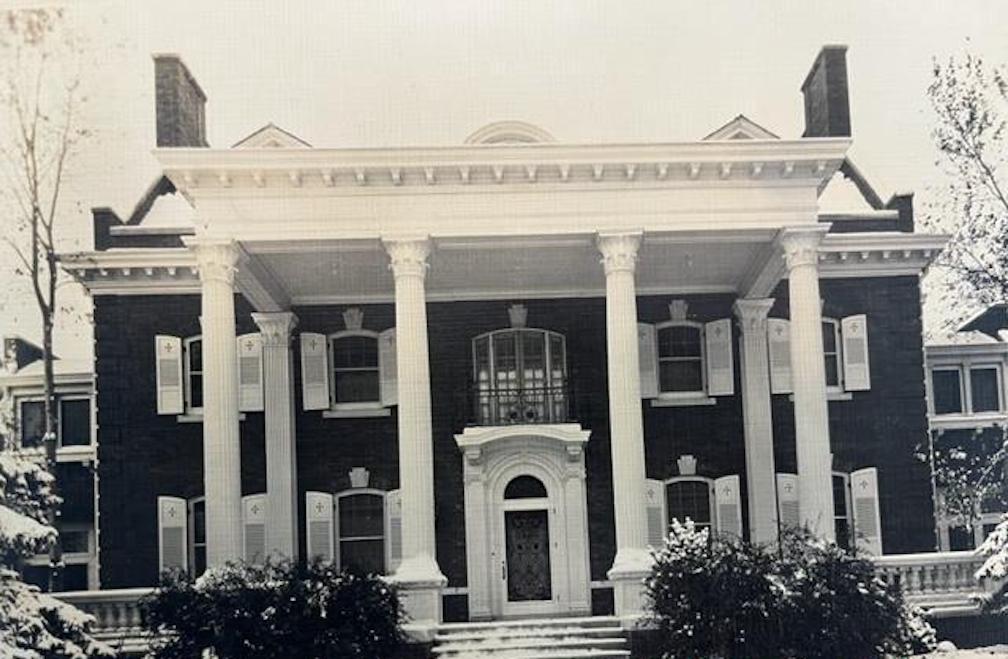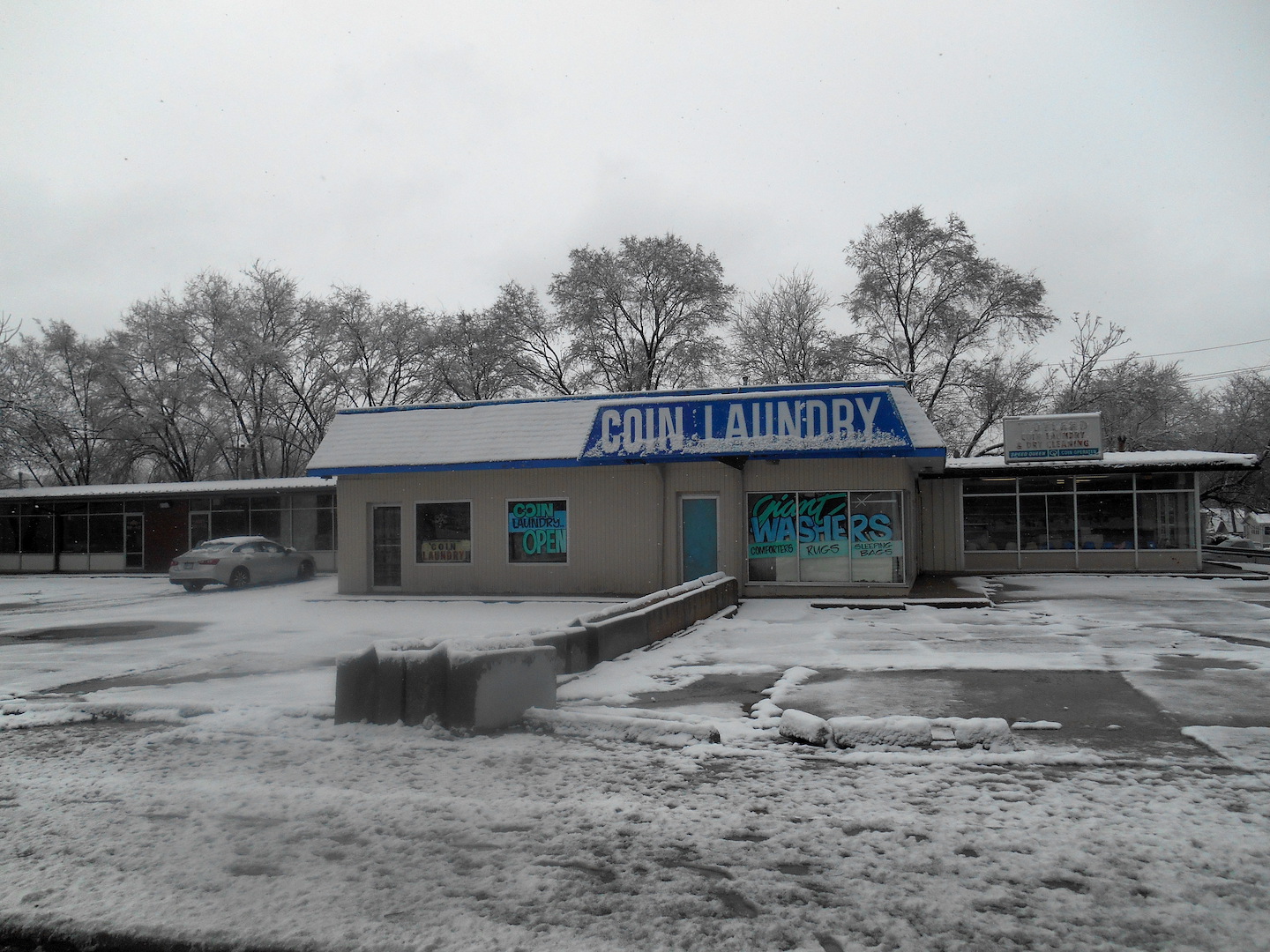Mr. Cassette often teases me that I should have a side blog called, “What’s the Deal, Omaha?” This article quite possibly fits in that category. As we all by now know, the historic Clarinda Apartment (3027 Farnam St) and Page Apartment (305-11 Turner Blvd), designated Omaha Landmark as well as on record with the National Register of Historic Places, were torn down in 2014 after a heroic fight by local preservationist groups and neighbors.
Built in 1909, both buildings were of the Georgian Revival style and thought to represent early luxury apartments in Omaha, some took issue. Those annoying little apartments just stood in the way of greatness. Of my favorite quotes on the subject, from the OWH article, “Omaha architect Tim Holland said, ‘the Clarinda-Page is a weak example of the Georgian Revival style, with disproportionate Doric columns and quirky elements. Basically this is an asymmetrical design of haphazard proportions,’ said Holland, who worked on the adjacent Midtown Crossing.” Yes, you read that right. He had a hand in the Midtown Crisis development and was throwing around the words disproportionate and quirky. Eyesore and a half, in the Cassettes’ estimation.

All roads lead to the Clarinda. Turner Boulevard, when it was a boulevard, facing south. The Clarinda in the distance. Photo lent with permission by the Omaha Planning Department.

Clarinda Apartments from Turner Park. 1915. I feel like this is a reverse image. Photo borrowed from the reference desk of the W. Dale Clark Library.

Mutual of Omaha and the Clarinda condo owners then went to the city to rescind the building’s landmark status, which protected it from demolition. William W. Welch was architect, builder and owner of the Clarinda and Page in their early years. With the muscle of Mutual, it was argued that the Clarinda and the Page were “beyond” repair and even “wasn’t truly historically significant.” (The Clarinda had been remodeled into condos in 2007. The owner did not choose to remodel the Page.) The worst was the claim that the “landmark status would drive away potential re-developers.” The preservationists and neighborhood groups argued that the apartments could be integrated into a new design scheme, uniting the historic buildings with modern. The Omaha Planning Board and City Council agreed with Mutual. The council voted to strip the landmark status. Turner Park North LLC, owned by Mutual, bought the building. Mutual of Omaha then demolished the buildings as part of an “unspecified redevelopment.” Some have said Mutual had plans to create an office park just east of Midtown Crossing. According to the Douglas County Assessor the lot is currently listed under Turner Park North LLC C/O Lund Company.

The Page, built in 1914.
Recently when driving by the corner of 30th and Turner Boulevard, I noticed a proud sign announcing Farnam Field. Since that time I continue to check on it. Perhaps you have seen this while driving up (or now down) Farnam Street. I have yet to see anyone play wiffle or kickball in this barren field but I was intrigued. According to the sign, Chicago Dawg House, just west in Midtown Crossing, was hosting this new ball field. The Dawg House is famous for a chill atmosphere offering every kind of specialty wiener known to man in addition to sausages, bratwursts and sandwiches. It would appear that the owner, perhaps a saint, went to Mutual with this idea of opening a first come first serve field. Maybe it’s nothing more than virtual shop front or simply a large-scale ad for the restaurant. I cannot be sure. Check out: http://www.omaha.com/go/dining/play-wiffle-ball-kickball-for-free-at-chicago-dawg-house/article_7bdac50e-3fa4-11e6-8a0a-7f7dce141d65.html.

I believe a ball field to be an excellent use of this space but I suppose the detective in me is suspicious that I am being marketed to. I love Pop-Up Anything, especially community gardens, guerilla art, clothing exchanges, campgrounds, neighborhood libraries, or street picnics. So my question to you, Omaha friends, is, what is going on with this space? What is the overall plan? Is Mutual or Lund going to build this office complex? What is being built there that they were in such a rush to tear down the Clarinda? Is the Farnam Field a marketing front or a pop-up to be celebrated? Said with my best wise guy accent, “What’s the deal, Omaha?”


This is only a small part of the story. Please feel free to leave a memory you have in Comments. You can keep up with my latest investigations by joining my email group. Click on “Contact” then look for “Sign me up for the Newsletter!” Enter your email address. It will then display “Thank you, your sign-up request was successful!” Make sure to check your email address to confirm. You will get sent email updates every time I have written a new article. Also feel free to join My Omaha Obsession on Facebook. Thank you, Omaha friends. Miss Cassette
© Miss Cassette and myomahaobsession, 2016. Unauthorized use and/or duplication of this material without express and written permission from this site’s author and/or owner is strictly prohibited. Excerpts and links may be used, provided that full and clear credit is given to Miss Cassette and myomahaobsession with appropriate and specific direction to the original content.



A modern day mystery; what will develop?
Exactly. The Case of the Empty Lot. The taxes, of course, went way down after razing the Clarinda. It may sit a while.
Talk about having the rug pulled out from beneath you! I clearly remember when the Clarinda was being renovated in the 1970’s. The owner(s) at that time were respectfully renovating the apartments to make them competitive with popular suburban options. An open house was held upon completion of one of the apartments (I think it was the second floor “towered” unit) in conjunction with a Landmarks, Incorporated, event designed to showcase the advantages of living in old houses in established neighborhoods. Two recently renovated houses were also part of the event. I was quite impressed with the renovations (though at times my purist sensibilities slightly offended be some design decisions) and my youthful optimism (still a decade or two from being brutally murdered) told me that the Great Awakening was just ahead! Soon, I thought, everyone would be rushing into historic neighborhoods with the noble goal of restoring and maintaining them.
Regarding the interior of the Clarinda, all the woodwork had been refinished in a very dark stain (as was popular at the time) and all of the walls were stark white. The floors were covered in shag carpet… I’m fairly certain that it was burnt orange in color. It felt hip and now at the time… fresh and invigorating. I was certain that the Clarinda (and adjacent Page) would now live forever…
This is really haunting me. Clearly we inhabit a world where there are absolutely no standards or values that can be maintained when money (development) enters the picture. It would seem as if everyone can be bought or compromised, many of them for very little. I can only shake my head in utter disgust and contempt for those who willfully overturn the tireless efforts of those who struggle to preserve aspects of our history for our long-term, collective, benefit. The city has now been made more mundane and forgettable. This is a great example of how any given situation can be twisted and distorted to “get around” pesky problems such as landmark status. In this case people were hoodwinked into thinking that the only possible reason one would want to save an old building would be that it was “truly historically significant” or was a strong textbook example of an established and recognized style. What kind of BS criteria is that? How is it that no one was able to successfully challenge this crap?
The building’s immense value as a character-setting neighborhood anchor should have been apparent to all but the most dense (or corrupt). Why should its value hinge upon its conformity to one of the most boring style revivals ever? How ridiculous is that?! Rather, the building should have been celebrated for what it actually was: an eclectic and late example of the transition between the preceding Queen Anne style (asymmetry, corner “tower”, 4-over-1 window sash and incised segmentally-arched window heads) and then-currently fashionable Colonial Revival (Georgian and Classical elements). The “tower” was clearly a holdover from the late nineteenth century and is a large part of what made the building so memorable and appealing.
I trust all those that found the Clarinda’s facade too “quirky” or “disproportionate” to bear are now positively ecstatic over the current view of the back and sides of three stunningly symmetrical and well-proportioned, harmonious, edifices of pure architectural integrity.
P.S. In my comment above, I butchered a line with cut-and-paste. It should read: (though at times my purist sensibilities were slightly offended by some design decisions)